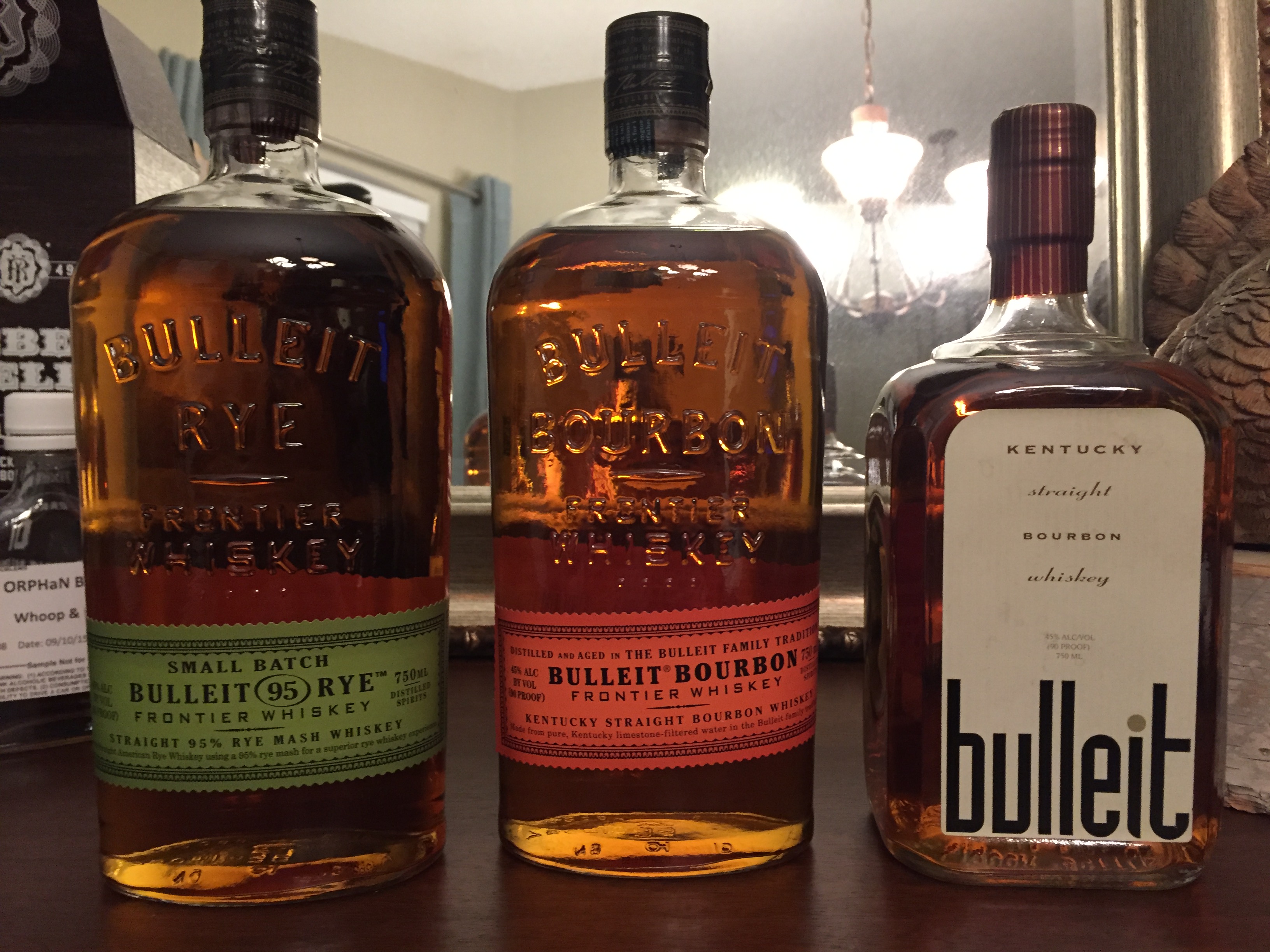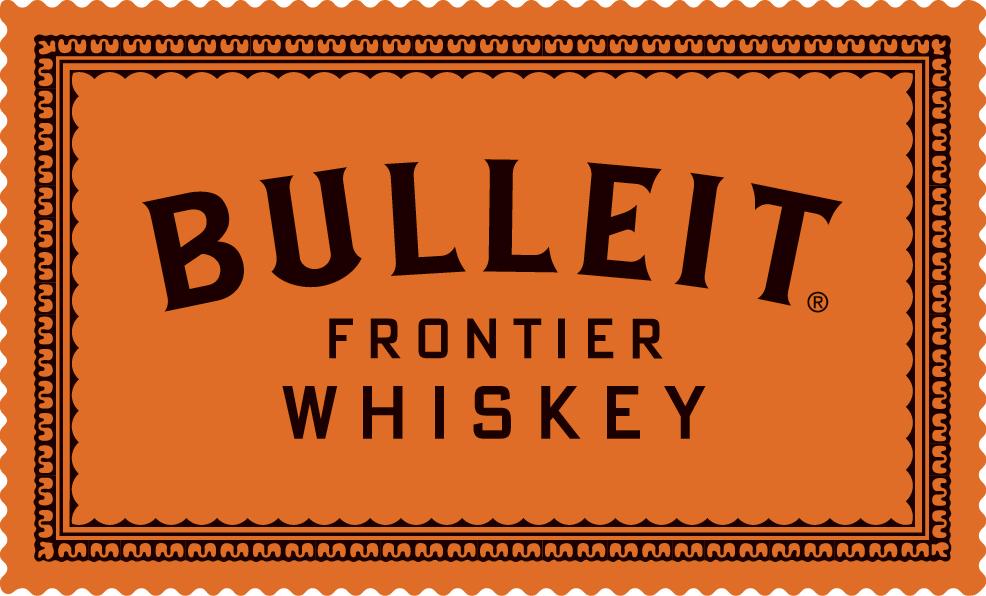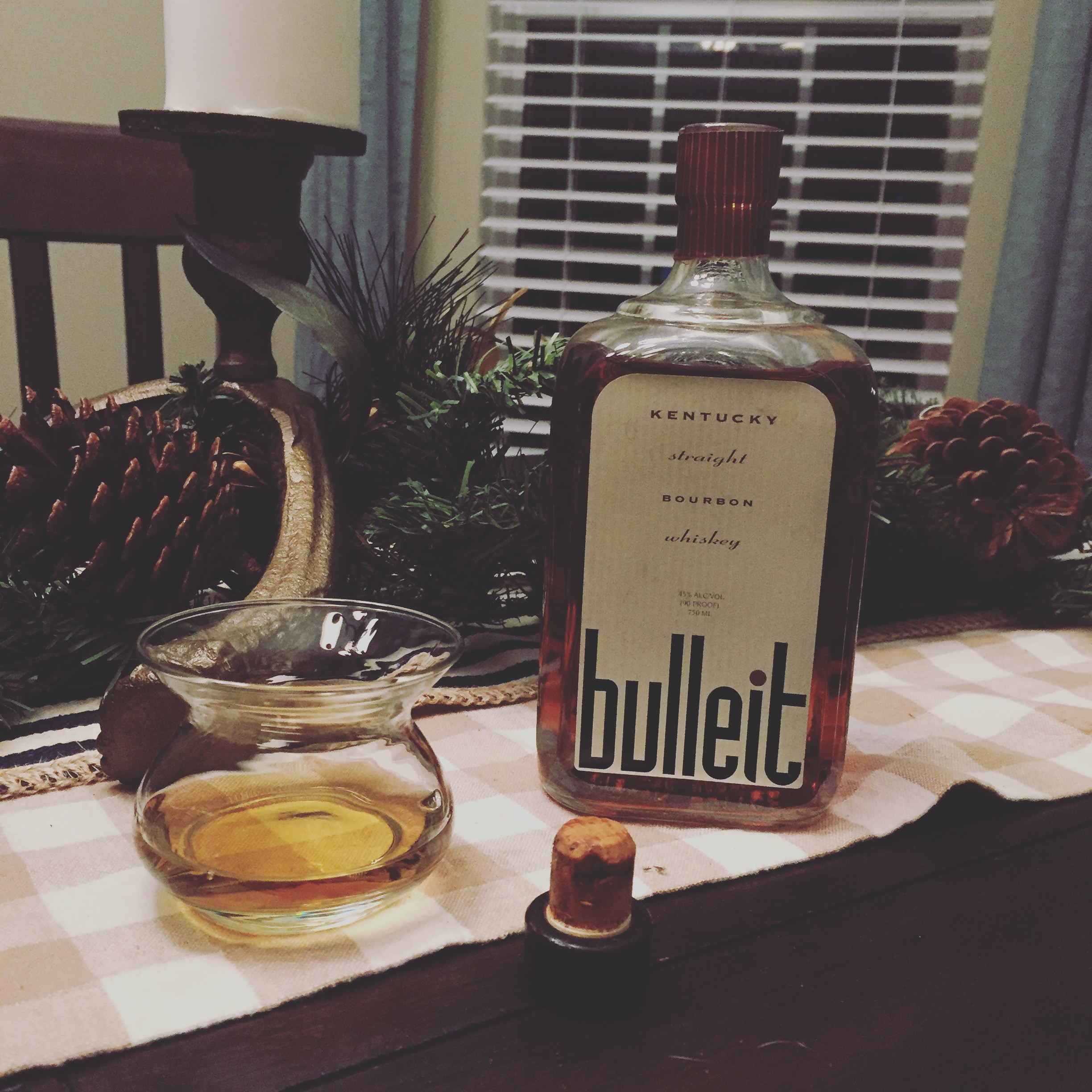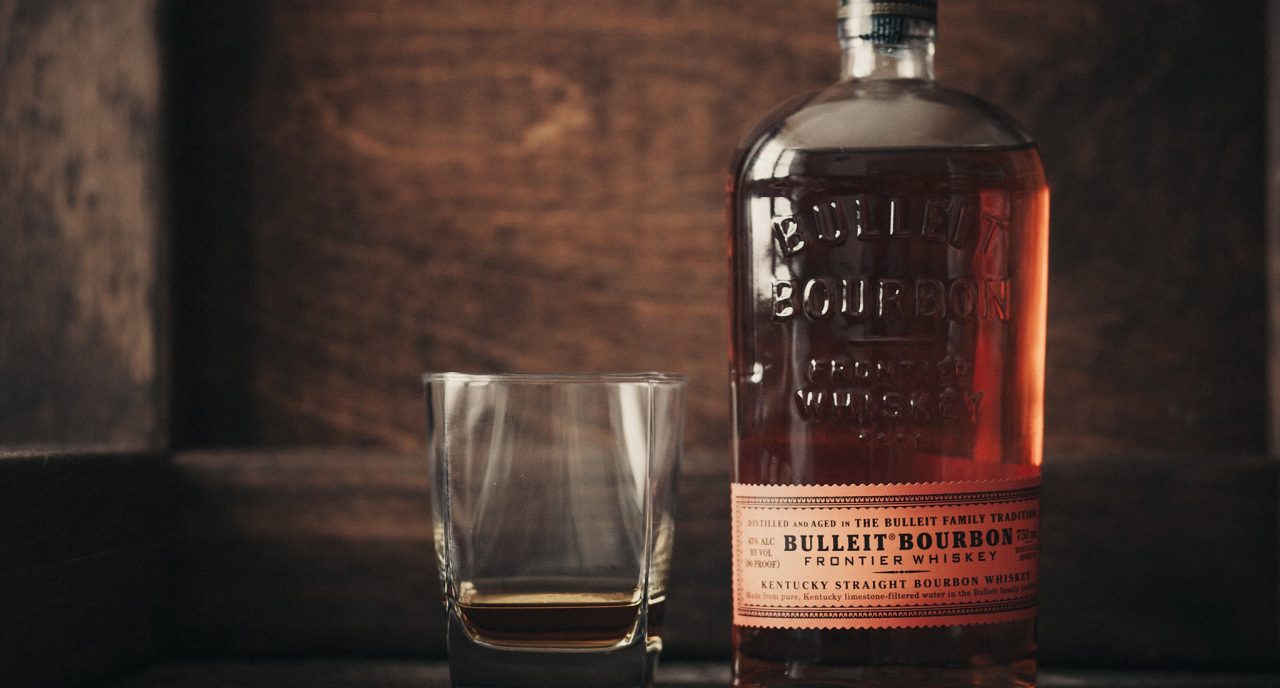Untold History of The Bulleit Brand
Walk into any bar across the country, and you’ll find an orange label with “Bulleit” on the front. The words “Frontier Whiskey” prominently displayed on the bottle. Bulleit (pronounced “Bullet”) has been a gateway bourbon for new drinkers over the last two decades. Everyone tries Jim Beam or Makers. Bulleit’s high-rye mash bill provides a different flavor profile from the standard “shelf” bourbons. Most know that Diageo owns the Bulleit brand. But, the brand has a whiskey family history dating back to the 1850’s. This post is a story about the brand. Not the history of the name. This is the story of the Bulleit brand that most Bourbonr’s don’t know.

Let’s talk about the brand history.
In 1987, Thomas E. Bulleit, Jr., fulfilled a lifelong dream of reviving an old family bourbon recipe by starting the Bulleit Distilling Company. Inspired by his great-great-grandfather Augustus Bulleit, who made a high-rye whiskey between 1830-1860, Tom left a successful law practice and risked everything to experience life on the frontier. Today, we’re not the only ones who are glad he did.
Tom Bulleit started the Bulleit brand in 1987. The original Bulleit looked much different than the bottle we know today. Tom Bulleit didn’t use his family history in Bulleit story originally. Instead, he focused on another Kentucky past time, horse racing. Ancient Age distillery (Buffalo Trace distillery DSP-KY-113) produced the first bottles of Bulleit. You’ll notice the first Bulleit bottles were in the squat/square bottles made famous by Elmer T. Lee (Weller Centennial). After starting the brand, Tom contract distilled at Ancient Age distillery to produce the product. Contract distilling is different than the NDP model we know today. Tom had the bourbon distilled and barreled on his behalf. Then he waited. The first bottles released in 1995 included a 90 proof Bulleit bourbon as well as a 100 proof “Thoroughbred” Bulleit bourbon.
Tom Bulleit also used a “new” technique (actually an old technique but this is marketing at its finest) that would make a four to six-year-old bourbon taste like a ten-year-old bourbon. The “engineering” meant they would heat the warehouses during the winter months to simulate the temperature swings of the Kentucky seasons.
Shortly after the Bulleit release Tom Bulleit was approached by Seagrams. The story I’ve been told is Seagrams was hunting for a brand to release bourbon under. Apparently, they liked the name “Bullet” but knew that wouldn’t fly. Next, a reference to Bullit county Kentucky. They found their solution in purchasing the “Bulleit” brand. It fit perfect with their frontier whiskey theme. Plus, there was a historical narrative to partner with an “apothecary” styled bottle. With a new look, Bulleit adopted the new tagline “Frontier Whiskey”. Bulleit Bourbon was produced at the Ancient Age distillery until 1999. After the Ancient Age barrels had run out Bulleit switched its bourbon source to Four Roses (another Seagram’s company). Everything was great until December of 2000. Seagram called it quits and had their assets divided between two buyers, Diageo and Pernod-Ricard. The Bulleit brand was acquired by Diageo. Diageo extended the contract with Four Roses to remain as the source for the Bulleit brand. This contract survived serval ownership changes from Four Roses (now owned by Kirin). Confused yet?

Four Roses remained the source of Bulleit for over a decade. Diageo was still buying from multiple distilleries for their other brands. It’s believed that Four Roses was the sole supply for the Bulleit brand until 2013(ish). Due to an increased demand for both products, Four Roses was no longer able to keep pace with their own growth while supplying a substantial amount of bourbon to an NDP. This is where we’re left today. There are the usual suspects as to who makes the current Bulleit bourbon. I assume there’s still a substantial amount of Four Roses in each bottle. Diageo has also contract distilled with Brown-Forman for many years. Barton has been rumored to source bourbon to Diageo. As well as Jim Beam.
I asked the Bulleit team about their new source. Here is their response: “We are unable to discuss the specifics of our relationships with our various distilling partners, but we guarantee our commitment to providing the same high-rye, high-quality bourbon that Bulleit has been known for throughout the years.” I believe it’s probably a mix of distilleries. As long as their contracting with a high-rye mash bill I don’t foresee a huge change in taste/quality.
After switching to the Frontier Whiskey bottle not much changed for Bulleit brand over the next decade. They made their way into more markets and gained a following along the way. In 2011, Bulleit released its first product line extension with a rye. Bulleit Rye differentiated itself by marketing the 95% rye mash bill. The funny thing is the rye is sourced from MGP in Lawrenceburg, Indiana. AKA the former Seagrams Distillery. Between the branding, high rye and higher proof, mixologist across the country fell in love. Bulleit kept the ball rolling by releasing a 10-year limited edition in 2013 as well as a barrel strength Kentucky only release in 2016. While the source of the two new bourbons is unknown my taste buds would say it’s definitely Four Roses.
For years Diageo let the famed Stitzel-Weller distillery serve as the unofficial headquarters of the Bulleit Brand. In 2014, the Bulleit experience opened at the Stitzel-Weller Distillery in Shively, KY. Believing in the brand, Diageo dropped $10 million on the new Bulleit visitors center. Bulleit is set to see even more changes in 2017 with the Bulleit distillery is set to open Shelby County Kentucky.
But, the biggest question is how does the old Bulleit compare to new Bulleit. Here’s my review:

The nose is toasted marshmallow and bananas foster. There’s a little bit of cedar and red fruit. It’s definitely on the sweet side but not overpowering. It has a peppery maple candy taste. The middle of the palate is orange peel and vanilla. The taste is not as sweet as the nose would would lead you to beleive. The taste also has a mineral or char note. The finish is a little spicy and not overly oaky. It lingers nicely with bananas fosters and oak.
All things considered, this is an excellent pour. It’s different than the High-Rye bourbon we’ve come to know as Bulleit. That’s not a bad thing. Ignoring the nostalgia of the bottle I’d pick the new Bulleit barrel proof over this bottle. This bottle reminds me of dusty Old Charter 7. It’s probably the same bourbon.

12 comments
I started Seagrams 7. Then switched to Jack Daniels the Bulleit. I was hooked. Had trouble finding it at first, but now it’s pretty much every where now. Even had a chance to meet Tom Bulleit here in Saint Louis. It is a great bourbon!
Considering Old Charter 7 was distilled at Bernheim and not BT would suggest dusty Builleit is not the same distillate.
Went there for first time this summer. Very nice experience. I was a cop in early 70’s near there but had never been on their campus.
what some people say is a good bourbon makes me wonder are we talking people
who drink neat or people who add something to it. I’ve worked in the business for
25 years and I can understand if we are talking about drinking 10yr Blanton’s,
Jefferson’s presidential select, pappy 20 yr etc… but to say reg makers, larceny,
bulliet in the same sentence confuses people who are new to bourbon.
I run into this all the time and try to explain to them the general levels
but I think a lot of people just try to find a frugal way to buy and live with it.
Then they try to soap box the brand they buy to other people. but I find to
often the public trying to cross over the mixing bourbon to ones you drink
neat and fall for marketing & internet fads.
@john gray, “fall for marketing & internet fads” the same could absolutely be said in the other direction, when people fawn over limited releases and premium priced bottles that are no better (or are worse) than Four Roses SB, Evan Williams SB, etc. Even the unicorns you’re throwing around are as much hype as they are substance. I can think of a lot of bourbon I like better than the Jeffersons’ PS 18 I had, at a fraction of the cost. So sure, expose people to good bourbon, and share the good stuff as people learn what they like, but if we’re arbitrarily dividing things into levels, we’re doing every palate a disservice.
Do you think for one minute that if the people who make your wonderful cheap finds
you mentioned ( Now these are the ones who produce it so they would know their
quality) really thought that was as good as the few and many more I mentioned,
they would not be asking for the same price range as the ones you just soap boxed
defended? I think not. It’s a business. Believe me you larceny, maker’s bulliet
would be a lot more. There is nothing wrong with being frugal but their is a
hierarchy to bourbon for a reason even if you don’t agree with the price range.
but price aside it’s ludicrous to convince other people that their makers are high
end. matter of fact for the money you pay for makers is a little to much for the
quality. If you like makers at least get their 46 or higher
Wow, what an asinine point of view. The notion that quality bourbon cannot exist at reasonable prices implies that the sales price of an item is, on all occasions, a complete and encompassing measure of its actual quality. That just simply makes no sense. There are business models in all walks of the economic landscape that operate on different criteria. Companies throughout the world use the notion of product placement within a given market to establish the desired value for their product and some do it so well that they actually use very similar products produced by the same organization to “create” a structure under which their products can saturate the market at all price points. Look at Buffalo trace. Their product tree is so encompassing that they have saturated the market. You can buy that bottle of Pappy 23 for untold $$ if you can find it or, get one heck of a pour from a $30 bottle of Weller 12. Eagle Rare, Blanton’s, Elmer T Lee. All different products. All different price points, different target markets, different market placement. All good Bourbon. Marketing and internet fads are just as essential to these high end distillers/producers as to any other brand. Maybe those of you who’ve been “in the business” for 25 years get your spirit details and info from some more impressive means, but the rest of us probably use the internet. Personally, I’d say to equate Bulleit drinkers to lemmings who are incapable of determining whether or not they truly enjoy a glass of bourbon simply because the internet told them to is a bit presumptuous. To be so pretentious as to say that a product is categorically not “good” bourbon because you happen to believe yourself to be of a higher class of drinker that in some way gives you the ability to look down upon a guy who wrote an article about one particular entry into a huge category of entries in a hobby that he enjoys is ridiculous.
I personally don’t care if you mix your bourbon or drink it neat but I do care that you feel a need to put down someone who enjoys drinking something that is at worst just not quite refined enough for your delicate palate.
The Bulleit 10 Year is as good a bourbon as any of the above mentioned including the Pappy’s.
Ditto. You can find quality at every price range, which is why you can’t find the good value bourbon on shelves anymore. Must be a bunch of dummies that have figured that out.
Very interesting and informative article. I am 54 years old and I only started drinking bourbon in 2011 so I am relatively new to the product. I fell in love with it but I do have my standards. Right now I have my top 3 favorites: #1 Buffalo Trace; #2 Bulleit; #3 Blanton’s. My ranking is not just based on taste. I cannot tolerate paying $60-$100+ for a 750ml bottle of bourbon (or any booze) and then consume it in one night. I like to be able to drink as much good bourbon as I want and not break the bank. From that perspective, Buffalo and Bulleit are the best for your buck. I tried other brands in the same price range (Maker’s Mark, Larceny, Jim Beam Black; Four Roses) and find them to be almost un-drinkable in comparison.